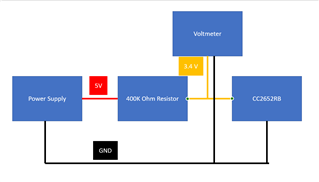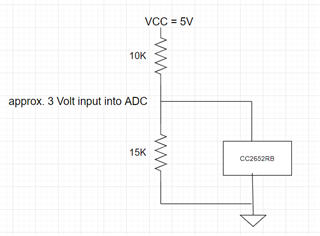Hi,
Good day.
Our customer working on the CC2652RB and they have the following question:
"my question is about the maximum input current on the analog pin of the CC2652RB with VDDS = 3V.
In the current situation it could happen that 5V are applied through a 10K pull up resistor => it means a 2V over voltage (5V-3V) through 10K => 0.2 mA input current. If there is a symmetrical capability between output and input currents I should expect a limit of 4 mA and in this case 0.2 mA should be a safe current that doesn't exceed the maximum ratings: is it correct?"
Thank you for your usual help. Stay safe always.
Regards,
Cedrick
-
Ask a related question
What is a related question?A related question is a question created from another question. When the related question is created, it will be automatically linked to the original question.



